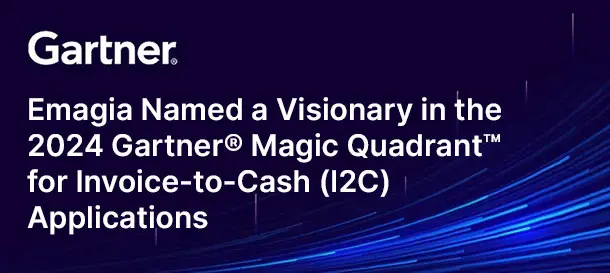The Order-to-Cash process is at the heart of business revenue flow. The Ultimate Guide to Order-to-Cash Automation explores why automating this process is essential for efficiency, speed, and accuracy. Automation transforms the O2C cycle by reducing errors, improving cash flow, and enhancing customer satisfaction. In this guide, we will cover every stage of the O2C process, explore why automation matters, discuss its benefits, and offer tips for selecting the right software solution.
Understanding Order-to-Cash Automation
Order-to-Cash Automation refers to the use of technology and software to streamline and automate all stages of the order-to-cash process. It eliminates manual intervention, reduces errors, improves cash flow, and increases operational efficiency.
The O2C Process Explained
The O2C process includes several stages, each critical for successful revenue realization. These stages include order management, credit management, order fulfillment, invoicing, accounts receivable, cash application, collections, payment collection, dispute resolution, and revenue recognition.
Stages of the O2C Process
- Order Management: Capturing customer orders efficiently to start the O2C cycle.
- Credit Management: Assessing customer creditworthiness to reduce risk.
- Order Fulfillment: Ensuring timely and accurate delivery of goods/services.
- Invoicing: Automating invoice generation for faster billing.
- Accounts Receivable (AR): Tracking and managing receivables.
- Cash Application: Matching incoming payments to invoices.
- Collections: Following up on overdue payments.
- Payment Collection: Receiving funds through secure channels.
- Dispute Resolution: Quickly resolving invoice discrepancies.
- Revenue Recognition: Ensuring correct and compliant recognition of revenue.
Why Automation Matters in the O2C Process
Automation in O2C matters because it eliminates manual inefficiencies, reduces processing time, improves accuracy, and ensures faster revenue realization. It plays a key role in digital transformation for finance teams.
Key Drivers for O2C Automation
- Improving Cash Flow
- Reducing Days Sales Outstanding (DSO)
- Enhancing Accuracy and Compliance
- Improving Customer Experience
- Reducing Operational Costs
- Enhancing Scalability
Key Benefits of Order-to-Cash Automation
Accelerate Cash Flow
Automation speeds up invoicing, collections, and cash application, ensuring businesses have cash on hand faster.
Reduce Days Sales Outstanding (DSO)
Automating payment reminders, dispute resolution, and cash application helps reduce DSO and improve working capital efficiency.
Improve Working Capital Management
Better visibility and faster cash flow enable effective planning and allocation of working capital.
Increase Operational Efficiency
Automated workflows reduce manual errors, improve compliance, and free teams to focus on value-added activities.
Enhance Customer Experience
Automation provides transparency, faster processing, and personalized communication, leading to higher customer satisfaction.
Technology & Tools for O2C Automation
Accounts Receivable Automation Software
Tools that automate invoice processing, collections, and reconciliation to reduce manual workload and improve accuracy.
Robotic Process Automation (RPA)
RPA automates repetitive tasks across the O2C process, improving speed and accuracy.
AI in O2C Automation
AI enhances decision-making with predictive analytics, intelligent cash application, and personalized collections strategies.
ERP & CRM Integration
Integrating O2C automation with ERP and CRM ensures seamless data flow and unified operations.
Self-Service Portals
Customer EIPP portals improve transparency, enabling customers to access invoices, payment status, and history instantly.
Metrics & KPIs to Measure O2C Efficiency
Days Sales Outstanding (DSO)
DSO measures how quickly customers pay invoices. Lower DSO means faster cash flow.
Cash Conversion Cycle (CCC)
CCC measures the time taken to convert inventory and receivables into cash.
Invoice Accuracy Rate
Measures the percentage of invoices issued without errors.
Order Cycle Time
Measures how long it takes to complete the order-to-cash process.
Real-Time Reporting & Analytics
Dashboards and analytics provide actionable insights into every stage of the O2C process.
Implementation Strategies for O2C Automation
O2C Process Analysis
Mapping current processes to identify inefficiencies and automation opportunities.
Implementation Roadmap
Structured planning for successful O2C automation, including timelines, priorities, and resources.
System Integration
Ensuring smooth integration with ERP, CRM, and payment systems.
Change Management
Preparing teams for transition with training and stakeholder alignment.
Data Migration
Seamless migration of historical data into the new automated system without disruptions.
How to Choose the Right O2C Automation Software
Key Selection Criteria
- Scalability
- Ease of Integration
- Automation Capabilities
- User Experience
- Analytics & Reporting Features
- Security and Compliance
- Vendor Support
Evaluating Vendors
Consider vendor expertise, track record, customer references, and industry fit.
Best Practices for Order-to-Cash Automation
To maximize results, organizations should: automate routine tasks, maintain high-quality data, ensure seamless ERP integration, continually monitor KPIs, and invest in training for teams.
Industry-Specific O2C Automation
Different industries have unique requirements for O2C automation. SaaS companies focus on subscription billing, while manufacturing emphasizes order fulfillment automation.
SaaS O2C Automation
Recurring billing automation, subscription management, and predictive analytics are key features for SaaS companies.
Manufacturing O2C Automation
Focus on order processing automation, inventory visibility, and invoice accuracy.
Deep Dive into the Stages of Order-to-Cash Automation
Order Management Automation
Order management automation streamlines the process of capturing, validating, and processing customer orders. This stage ensures faster order entry, reduces human errors, and enhances customer experience.
Modern O2C automation tools integrate order management with CRM and ERP systems to ensure real-time updates and seamless workflow management. Automated order confirmation emails, inventory checks, and order tracking are vital features that improve efficiency.
Credit Management Automation
Credit management automation evaluates customer creditworthiness instantly. Using AI-driven scoring models, the system can determine optimal credit limits and payment terms for each customer, reducing financial risk.
This stage is vital for reducing bad debt and improving cash flow. Automated alerts for overdue accounts and real-time credit monitoring help businesses take proactive measures to protect revenue.
Order Fulfillment Automation
Automating order fulfillment ensures accurate and timely delivery of goods or services. It integrates inventory management, warehouse operations, and logistics systems.
Automated alerts for low inventory levels, order prioritization, and real-time tracking improve efficiency and customer satisfaction.
Automated Invoicing & Billing
Automation in invoicing reduces manual errors and speeds up billing. E-invoicing ensures compliance with regulations and improves payment processing.
Automated invoicing systems generate invoices instantly upon order completion, send them directly to customers, and track payment status, significantly reducing delays in revenue recognition.
Accounts Receivable Automation
Automated AR workflows streamline payment tracking and reconciliation. Intelligent cash application tools match payments to invoices automatically, reducing manual work and improving accuracy.
Self-service portals allow customers to view invoices, make payments, and resolve disputes without manual intervention, reducing delays and improving the collections process.
Cash Application Automation
Cash application automation uses machine learning and AI to match incoming payments to the correct invoices. This reduces the time spent on manual reconciliation and increases payment accuracy.
Real-time monitoring dashboards provide insights into payment processing performance, enabling proactive intervention to resolve mismatches quickly.
Collections Automation
Automated collections workflows prioritize accounts with overdue balances, send personalized payment reminders, and track follow-ups. AI-driven prioritization helps collections teams focus on high-impact accounts.
Automation also ensures compliance with communication regulations and reduces collection cycle times.
Dispute Resolution Automation
Disputes slow down the payment process and increase DSO. Automated dispute resolution workflows allow customers to raise queries directly via self-service portals, enabling quicker resolution.
AI-powered systems can analyze dispute patterns, predict potential issues, and provide resolution suggestions, reducing manual effort and improving payment timelines.
Revenue Recognition Automation
Automating revenue recognition ensures compliance with accounting standards. This stage ensures accurate and timely recognition of revenue after payment collection and order fulfillment.
Automation reduces compliance risk, improves reporting accuracy, and accelerates financial closing processes.
Advanced Benefits of Order-to-Cash Automation
Faster Revenue Recognition
Automation accelerates every step of the O2C process, enabling businesses to recognize revenue sooner and improve financial reporting accuracy.
Error Reduction and Compliance
Automated workflows significantly reduce manual errors and ensure compliance with accounting standards and regulations.
Scalability for Growing Businesses
Automated O2C processes scale easily as the business grows, supporting increasing order volumes without proportionate increases in manual effort.
Enhanced Customer Experience
Transparency, faster order fulfillment, and self-service capabilities improve customer satisfaction and loyalty.
The Role of AI in Order-to-Cash Automation
Predictive Analytics for Credit Risk Management
AI algorithms analyze historical payment data to predict future payment behavior, enabling proactive credit management and reducing bad debt.
Intelligent Cash Application
Machine learning models improve payment matching accuracy and speed by learning from previous transactions and reducing exception handling time.
Smart Collections Prioritization
AI tools rank overdue accounts based on risk and payment probability, ensuring that collection efforts are focused where they are most effective.
Invoice Dispute Prediction
AI analyzes invoice disputes to predict common causes, enabling preventive measures that improve invoice accuracy and reduce delays.
Real-World Examples of O2C Automation
SaaS Industry Example
A leading SaaS provider implemented end-to-end O2C automation with subscription billing, automated collections, and self-service portals. This reduced DSO by 25% and improved cash flow visibility.
Manufacturing Industry Example
A global manufacturer integrated ERP with AR automation software, enabling automated order processing and payment matching. This reduced manual processing by 40% and cut invoice disputes by 30%.
Retail Industry Example
A retail chain adopted automated invoicing and payment processing, enabling same-day revenue recognition. This improved working capital and enhanced customer satisfaction.
Overcoming Challenges in O2C Automation
Data Quality Issues
Poor data quality impacts automation. Investing in clean, structured data and integrating data sources ensures smooth O2C automation.
Change Management Resistance
Automation requires process changes. Engaging stakeholders, providing training, and demonstrating benefits are critical for adoption.
Integration Complexities
Integrating automation tools with existing ERP, CRM, and payment systems can be challenging. Planning and selecting scalable solutions are essential.
Case Study Insights
Companies across industries report significant improvements after adopting O2C automation: reduced DSO, faster cash flow, improved customer satisfaction, and enhanced compliance.
Examples show that automation reduces manual work by over 50%, accelerates order-to-cash cycles, and enables finance teams to focus on strategic initiatives rather than repetitive tasks.
Choosing the Right Order-to-Cash Automation Software
Key Considerations for Selecting O2C Automation Software
Choosing the right O2C automation solution requires understanding your organization’s needs, processes, and scalability requirements. Key factors to consider include:
- Scalability: The software should handle increasing order volumes without significant performance impact.
- Integration Capabilities: Ensure the solution integrates smoothly with ERP, CRM, payment gateways, and other critical systems.
- Automation Capabilities: Assess the ability to automate multiple stages of the O2C process, including invoicing, collections, and cash application.
- AI & Predictive Analytics: Look for tools with AI-driven analytics for credit assessment, dispute resolution, and cash flow forecasting.
- User Experience: The software should be intuitive for finance teams and customers alike.
- Compliance & Security: Ensure it meets regulatory requirements and follows best security practices.
- Vendor Support: Consider the quality of vendor support, training, and customer service.
Steps to Evaluate O2C Automation Vendors
- Define your requirements and business goals.
- Request vendor demonstrations and product trials.
- Check references and case studies.
- Evaluate total cost of ownership, including licensing and integration costs.
- Assess flexibility for customization to meet your unique needs.
Best Practices for Implementing Order-to-Cash Automation
O2C Process Mapping
Start by mapping your current O2C process to identify inefficiencies and automation opportunities. This ensures a tailored implementation strategy.
Implementation Roadmap
Develop a structured roadmap that includes clear timelines, responsibilities, and milestones. This helps avoid project delays and cost overruns.
Change Management
Engage stakeholders early, communicate benefits, and provide training to ensure smooth adoption of the new system.
Data Migration and Integration
Plan for seamless migration of historical data into the new system and ensure robust integration with ERP, CRM, and payment systems.
Monitoring and Continuous Improvement
After implementation, monitor KPIs such as DSO, cash conversion cycle, and invoice accuracy. Use analytics to continuously improve the O2C process.
How Emagia Empowers Businesses with O2C Automation
Empowering Finance Teams
Emagia’s intelligent automation platform offers end-to-end O2C automation capabilities, helping finance teams reduce manual work and focus on strategic initiatives.
AI-Driven Credit Management
Emagia uses AI to assess credit risk in real time, allowing organizations to make informed credit decisions faster.
Smart Invoice Matching and Cash Application
Emagia’s cash application solution automates payment matching, dispute resolution, and cash allocation, significantly reducing DSO.
Seamless Integration
The platform integrates with ERP, CRM, and payment systems, providing a unified O2C workflow and a single source of truth for financial data.
Real-Time Analytics and Dashboards
Emagia offers interactive dashboards and reports that provide insights into KPIs, helping businesses make proactive decisions to improve cash flow.
Scalable Cloud-Based Solution
Emagia’s cloud platform scales to meet growing business needs, ensuring high performance without significant infrastructure investment.
Advanced Case Studies in Order-to-Cash Automation
Case Study: SaaS Company Streamlining O2C
A leading SaaS provider implemented a fully automated O2C system, integrating billing automation, payment reminders, and cash application workflows. The result was a 30% reduction in DSO and a 40% faster cash flow cycle. Automated dashboards allowed finance teams to make proactive decisions, improving forecasting accuracy.
Case Study: Global Manufacturing Firm
This manufacturing company integrated ERP and CRM with an AI-driven O2C automation platform. Automated credit assessments, dispute resolution workflows, and payment matching reduced manual tasks by 60%. Invoice processing times decreased by 50%, leading to faster customer payments and stronger cash flow management.
Case Study: Retail Chain with Dynamic Payment Terms
A retail chain adopted dynamic payment scheduling and automated collections prioritization using AI. This reduced outstanding receivables by 25% and improved customer payment behavior. Automated invoice matching and self-service portals enhanced customer satisfaction.
AI-Powered Use Cases in Order-to-Cash Automation
Predictive Collections Management
AI analyzes payment history and customer behavior to prioritize collections efforts. This predictive approach enables targeted communication strategies and reduces overdue accounts significantly.
Smart Dispute Resolution
Machine learning tools identify patterns in disputes and automatically propose resolution actions. This reduces dispute handling time and improves accuracy in invoice reconciliation.
Dynamic Credit Scoring
AI models continuously monitor customer payment performance and adjust credit limits dynamically. This improves risk management and reduces exposure to bad debts.
Real-Time Cash Flow Forecasting
Advanced AI tools analyze historical trends, payment patterns, and seasonality to generate real-time cash flow forecasts. This allows finance teams to plan and optimize working capital more effectively.
Key Metrics for Measuring O2C Automation Success
Days Sales Outstanding (DSO)
DSO measures how quickly receivables are collected. Automation reduces DSO by improving invoice accuracy, payment matching, and collections efficiency.
Cash Conversion Cycle (CCC)
CCC measures the time it takes to convert investments into cash. O2C automation shortens this cycle by accelerating order processing, invoicing, and payment application.
Invoice Accuracy Rate
Automation improves invoice accuracy, reducing disputes and accelerating payment cycles.
Order-to-Cash Cycle Time
This measures the entire time taken from order placement to cash receipt. Automation compresses this cycle, enhancing cash flow and reducing operational costs.
Dispute Resolution Time
Automated workflows speed up dispute handling, minimizing delays in payment collection.
Industry-Specific O2C Automation Strategies
SaaS Industry
Recurring billing automation and subscription management are critical for SaaS companies. AI-driven analytics help forecast renewals and prevent churn.
Manufacturing Industry
ERP-integrated credit assessment and dispute resolution automation improve efficiency in high-volume manufacturing operations.
Retail Industry
Self-service portals, automated payment matching, and dynamic payment scheduling streamline customer payments and improve satisfaction.
Healthcare Industry
Automated billing, compliance checks, and claim processing reduce errors and accelerate revenue recognition in healthcare providers.
Advanced Benefits of O2C Automation for Businesses
Improved Financial Visibility
Automation provides real-time dashboards and analytics that give finance teams clear visibility into receivables and cash flow.
Enhanced Customer Relationships
Automation reduces invoice errors, speeds up processing, and enables self-service options, improving the overall customer experience.
Scalability and Adaptability
Automated workflows scale easily, allowing businesses to adapt to growing demand without adding manual resources.
Regulatory Compliance and Security
Automation tools ensure compliance with industry standards and data protection regulations, reducing compliance risk.
FAQs on Order-to-Cash Automation
What is Order-to-Cash Automation and why is it important?
Order-to-Cash Automation is the process of using technology to streamline and automate the entire O2C cycle. It improves efficiency, reduces errors, accelerates cash flow, and enhances customer experience.
How does O2C automation reduce Days Sales Outstanding (DSO)?
O2C automation reduces DSO by accelerating invoice processing, automating payment reminders, streamlining collections, and improving cash application accuracy.
What are the key benefits of implementing O2C automation?
The benefits include faster cash flow, reduced DSO, improved working capital, error reduction, enhanced customer satisfaction, and improved compliance.
Which industries benefit most from O2C automation?
Industries like SaaS, manufacturing, retail, distribution, and finance benefit greatly as automation reduces manual effort, improves efficiency, and supports scalability.
How do I choose the right O2C automation software?
Choose software based on scalability, integration capabilities, automation features, AI analytics, compliance, user experience, and vendor support.
What challenges might I face during O2C automation implementation?
Common challenges include data quality issues, resistance to change, integration complexities, and ensuring compliance. These can be mitigated with thorough planning and stakeholder engagement.
Can O2C automation be customized for different industries?
Yes, modern O2C automation platforms offer industry-specific features, customization options, and integration capabilities to meet unique requirements.
Conclusion
Order-to-Cash automation is the foundation of modern finance operations. By automating every stage of the O2C process, organizations can reduce DSO, accelerate cash flow, improve working capital, and deliver superior customer experiences. AI-driven analytics, self-service portals, and integrated workflows transform the O2C cycle into a competitive advantage. Businesses that embrace automation gain efficiency, scalability, and agility, ensuring long-term growth and profitability.



